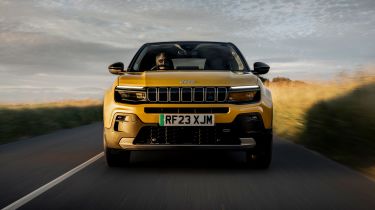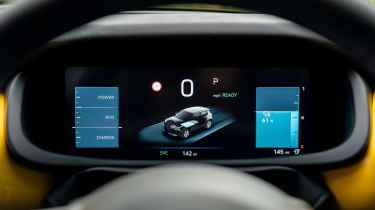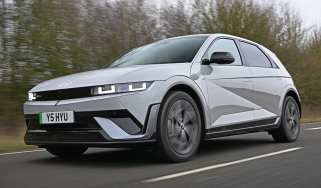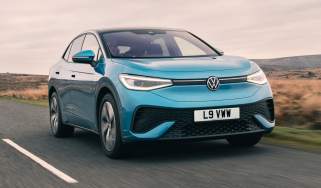Jeep Avenger review - Range, charging & running costs
“The Jeep Avenger EV is inexpensive to run, and cheaper petrol and mild-hybrid versions are now available”
As previously mentioned, the Jeep Avenger shares its platform with the Peugeot E-2008 and Vauxhall Mokka Electric and is the first to debut a new 54kWh battery (51kWh usable) which is set to come to those cars in the near future. Although available solely as an EV from launch, the Avenger later got a petrol and mild-hybrid version. These use a 1.2-litre PureTech engine which is the same unit used in the Peugeot 2008 and Vauxhall Mokka. The mild-hybrid version, badged e-Hybrid, pairs this with a small 0.9kWh battery and electrical assistance to improve efficiency.
On a single charge, the electric Avenger is said to achieve 248 miles on the combined WLTP test cycle. This is slightly less than the 281 miles possible in the slightly larger Kia Niro EV, although it’s still more than the DS 3 E-Tense and should be sufficient for most city-based buyers.
As standard, the Jeep Avenger gets access to 100kW DC rapid charging. If you’re able to find a compatible charger, this will charge the small soft-roader from 20-80% in just 24 minutes. Of course, a much cheaper (yet slower) alternative is to charge using a 7kW home wallbox, which should take around four and a half hours for an equivalent charge. Plugging into a standard three-pin socket will take significantly longer.
More reviews
In-depth reviews
The petrol Avenger is much cheaper to buy or lease of course, so it will be a better bet for private buyers with a smaller budget looking to keep their monthly finance bills down. It undercuts the top-selling Ford Puma on price, and it’s also pretty economical, returning up to 49.6mpg, with middling CO2 emissions of 129g/km. This puts it in similar territory to the Citroen C3 Aircross with figures of 54.2mpg and 134g/km, while the entry-level Puma can only manage 47.9mpg.
During our test that took in a mix of urban, country and motorway driving, the Avenger e-Hybrid managed to complete 27% of the drive running on electric power alone, which is even more than Jeep’s claimed 20%. It’s particularly useful in stop-start traffic or for low-speed manoeuvres, where the brand says the combustion engine rarely has to step in.
Features like regenerative braking also feature on this model, helping to put some energy that would otherwise be wasted by slowing down, back into its 0.9kWh battery. The result is better fuel economy of up to 57.1mpg. Considering its small price increase over the petrol, we’d say this model offers the best balance of affordability and low running costs if you can’t spring around £4,000 more for the electric model.
How efficient is the Jeep Avenger in the real world?
In our brief time with the car we were able to get around 220 miles on a single charge – even in cold, wintery conditions, thanks to the handy addition of an energy-efficient heat pump. One useful feature is that you’re able to increase the strength of the regenerative braking function, meaning more charge should be retained over the course of a journey.
The off-road focused 4xe version still has an impressive fuel economy official figure of 54mpg thanks to its hybrid tech, and we managed around 45mpg during our test drive.
What will the Jeep Avenger cost to insure?
The electric version of the Avenger spans groups 24-25 out of 50. The Vauxhall Mokka Electric spans groups 21-23, meaning the mechanically similar Jeep will be slightly more expensive to insure. The regular petrol and hybrid range sits in insurance group 22, which is higher than the likes of the Renault Captur that spans from group 11.
















